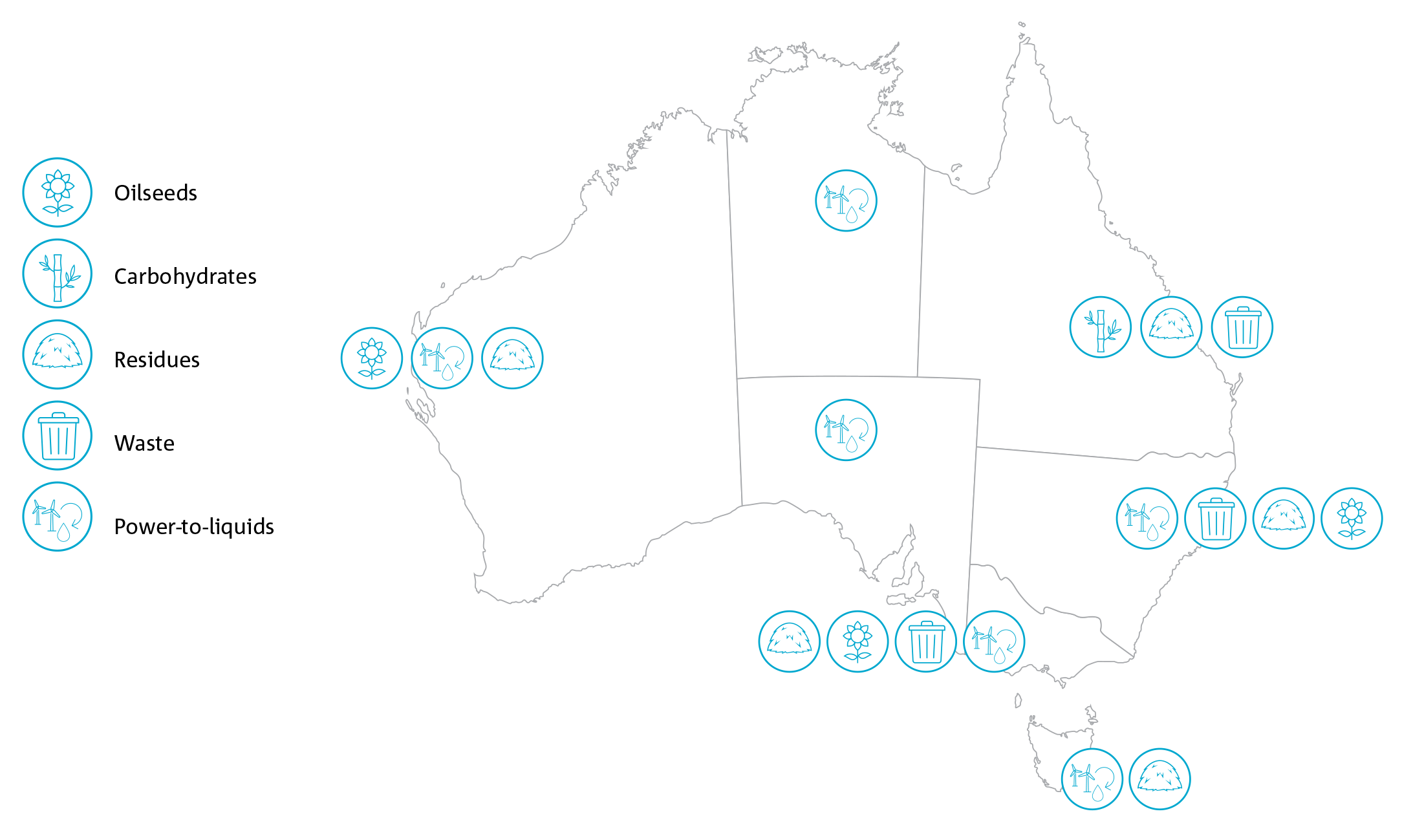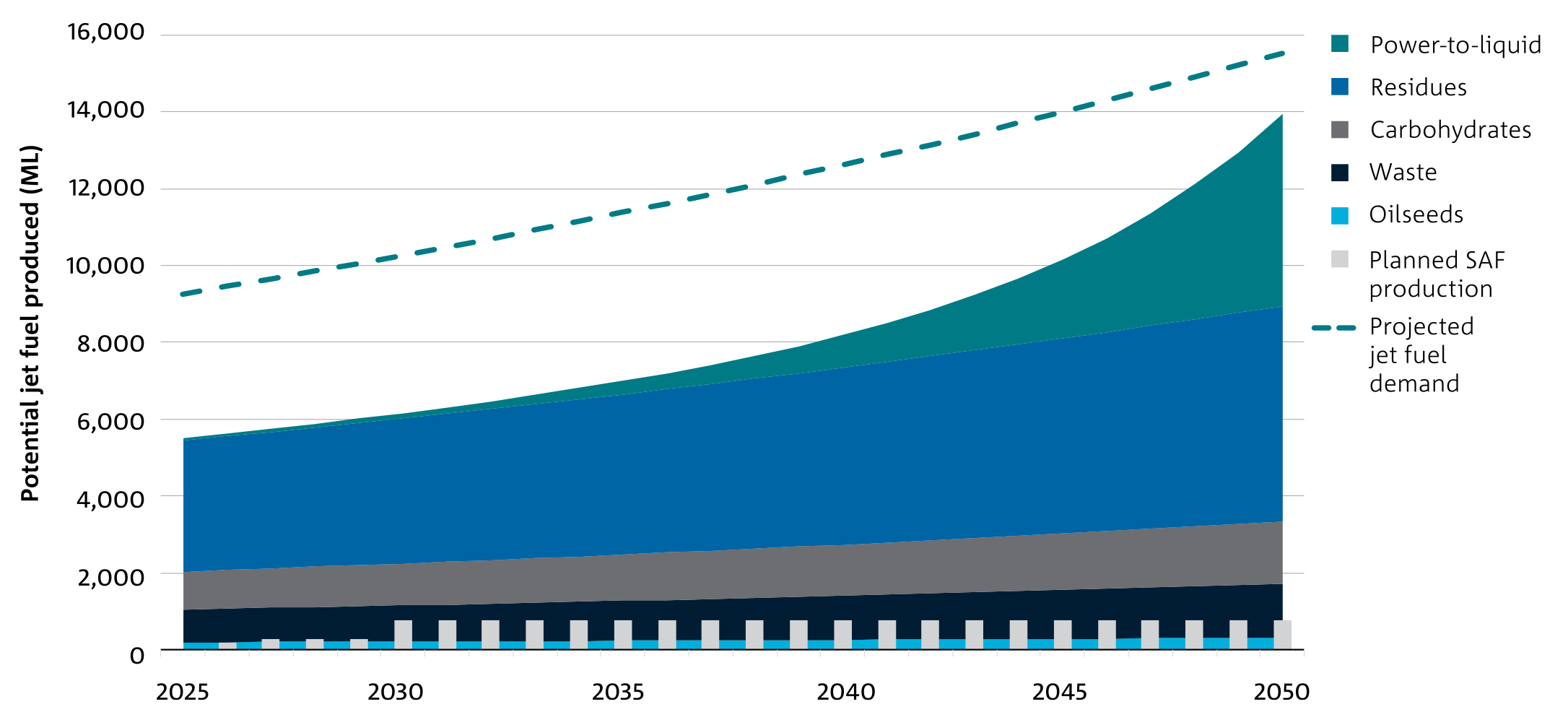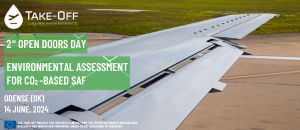Key points
- Australia is very well placed to develop a diversified portfolio of feedstocks for a domestic sustainable aviation fuel (SAF) industry.
- There is enough feedstock to supply almost five billion litres of SAF production in Australia in 2025.
- Through a combination of feedstocks and mature technologies, a large and growing portion of Australia’s jet fuel demand can be met with local materials such as agricultural waste and residue.
Aviation is one of the most challenging industries to decarbonise, contributing 2.5 per cent of the world’s total carbon. As countries race to meet their net zero emissions targets, global interest and investment in sustainable aviation fuels (SAF) is increasing.
We’ve developed the Sustainable Aviation Fuel Roadmap in partnership with Boeing Australia.
This roadmap involved consultation with more than 40 national and international organisations across the SAF value chain. It identifies key opportunities for building an Australian SAF industry and recommends the key actions required to help it overcome economic, regulatory and technological barriers.
Max Temminghoff is a Senior Manager with CSIRO Futures and the lead author of the report.
He said one of the key questions for the SAF industry is how much feedstock we can sustainably access. Feedstock is raw material used to create fuel, ranging from agricultural waste to vegetable oil and hydrogen.
“With increasing signs of climate change on our doorstep, we’ve teamed up with Boeing to perform this analysis that examines all the potential feedstocks and how much fuel that could mean for Australia,” Max said.
What is sustainable aviation fuel?
With passenger demand expected to grow further over the coming decades, aviation fuel poses a major challenge to countries and companies striving to hit net zero targets. With few obvious ways to eliminate emissions, aviation is considered a hard-to-abate industry. But one option, and a critical part of decarbonisation efforts, is moving to SAF.
Unlike conventional jet fuels, SAF is produced from renewable sources like agricultural waste, animal fats and vegetable oils. While the reductions in carbon emissions differ across feedstocks and production pathways, most achieve between 60 and 100 per cent reduction compared to conventional jet fuels. Each Australian state and territory has its own feedstock advantages.

Australian aviation industry challenge
Australia’s large landmass, dispersed population, and relative geographical isolation mean aviation is an essential part of our infrastructure. Domestic air travel doesn’t just facilitate tourism. It is vital for cargo transportation, emergency response, medical evacuations, business and trade, and national defence.
Domestic aviation emissions in Australia more than tripled between 1990 and 2019, and demand for jet fuel is projected to increase by 75 per cent from 2023 to 2050.
“Australia’s geography means that some of the options we’ve seen in Europe, where countries have banned short-haul internal flights if there is an alternative option of rail travel, are not really applicable here,” Max said.
“We’re also in the position where more than half of all Australians are first- or second-generation migrants, so international travel is very important.
“If airlines start to eye international flights as low-hanging fruit to bring their emissions down, this could leave Australia in a very challenging position. We do wish to achieve net zero goals, so SAF is a technology that is important for us to pursue.”
Australia on the runway to sustainable fuel
The Sustainable Aviation Fuel Roadmap shows Australia is very well placed to develop a diversified portfolio of feedstocks for a domestic SAF industry.
Our climate, farming practices, and established supply chains present significant opportunities for developing a range of feedstocks composed of organic matter. These are known as biogenic feedstocks and include sugar cane, sawmill residues, municipal solid waste, oilseeds and used cooking oil.Potential fuel production from projected feedstock sources. Through a combination of feedstocks and technologies, local feedstocks can meet a large and growing portion of Australia’s jet fuel demand.

Australia’s abundant renewable energy resources and emergent green hydrogen production will be crucial in the processes for refining biofuels. But as the hydrogen economy ramps up and green hydrogen becomes more plentiful, hydrogen will also become its own feedstock. It can be combined with CO2 to produce SAF.
The roadmap estimates there is enough feedstock to supply almost five billion litres of SAF production in Australia in 2025. And up to 14 billion litres by 2050.
“Our key finding is that by using a combination of feedstocks and technologies, we can meet a large and growing portion of our jet fuel demand,” Max said.
“We’re going to have a diversified portfolio of feedstocks for different parts of Australia and different technologies to bring them to fruition. We detail a range of strategies in the report – from supportive policy frameworks to economic, research and development levers – that will allow us to do that.”
If Australia does decide to invest in a domestic SAF industry, Max said the benefits extend far beyond emissions reduction. Renewable by-products, such as renewable diesel and LPG, regional development and job creation, improved waste management, and liquid fuel security are all valuable co-benefits.
“We currently import 90 per cent of our liquid fuels from overseas along pathways that are increasingly susceptible to geopolitical risks and climate change impacts,” Max said.
“Being able to reduce our reliance on these imports and produce Australian SAF from Australian feedstocks for Australian airlines is a very appealing prospect.”
Roadmap for aviation innovation
The Sustainable Aviation Fuel Roadmap is a critical part of our Missions-based work in supporting emissions reduction across hard-to-abate industries. It complements the SAF research taking place in Western Australia and Queensland.
Our research into the Fischer-Tropsch (FT) process is taking place in our Perth laboratory and aims to produce a range of FT products from hydrogen and CO2. This include FT wax, which can be stockpiled safely and upgraded into jet fuel during times of need. Additionally, researchers in Queensland are focusing on gasification as a potential technology for converting several feedstocks into a jet fuel precursor.
“One of the big benefits of gasification is that you can throw a variety of different feedstocks into the same machine,” Max said.
“Municipal solid waste, sawmill residues and agricultural residues can effectively be processed at the same centre – a feedstock hub if you will – to produce a precursor for jet fuel. That really helps reduce the long-term supply risk that arises when you’re relying on just one kind of feedstock.”
There is some degree of urgency around the development of a sovereign Australian SAF industry. In part, this is because we need to start tackling emissions from aviation if we are to achieve net zero targets. But it’s also because any delay will risk Australia missing the opportunity to participate in a growing global market.
“Some of our feedstocks are already being purchased by countries such as the US and Singapore,” Max said.
“Often in the past Australia has exported raw materials and missed out on all those other benefits that come with upgrading locally. We don’t want to see that happen here. We’re quite conscious that we have to get moving, otherwise it will be a lost opportunity.”
Author
Ruth Dawkins
Source
CSIRO articles, press release, 2023-08-10.
Supplier
Boeing
CSIRO - Commonwealth Scientific and Industrial Research Organisation
Share
Renewable Carbon News – Daily Newsletter
Subscribe to our daily email newsletter – the world's leading newsletter on renewable materials and chemicals











